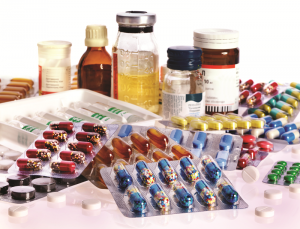The stress of serialisation – compliance and coherence

Pharmafocus Deputy Editor, Sean Murray, takes a look at an important topic that pharmaceutical companies need to contend with – serialisation
The benefits of serialisation are pretty obvious to us all. The transparency and traceability of having a unique code on each package, similar to the way a car is assigned an identity number and registration plate as soon as it’s manufactured, will mean that pharmacists, brand owners, regulators and even consumers, will be aware of a drug’s journey from start to finish. It is essential, also, in the protection against counterfeit medicines. According to the World Health Organization, counterfeit drugs make up approximately 1% of the pharma supply chain in developed countries. Truly a global problem, serialisation will go some way to alleviating the losses, and dangers, from counterfeit drugs.
But how to implement it?
That is certainly no easy task. It is an undertaking that requires investment in terms of technology and training, as well as significant operational changes. It will require careful analysis of existing systems in order to make changes that, instead of adding complexity to the already convoluted supply chain, will streamline these processes in a more effective way. From the level enterprise resource planning systems to individual line speeds, decisions must be made that will not act as a disrupting force.
The key, however, to a successful implementation is data – in terms of both integrity and volume. Keeping data clear, secure and traceable will ensure a consistent approach to serialisation once the appropriate operational changes have taken place. Choosing the right data carrier is important, with options including QR, datamatrix and GS1 barcodes, as is creating the right processes and accountabilities for staff at different levels, often across continents. Accessibility of good quality data at all times will go a long way to solidifying serialisation’s role within the supply chain.
This will of course be vital in the face of the increased regulation in this area that has the potential to pose a real challenge to traditional pharma supply chains. The US Drug Supply Chain Security Act, for example, places a great emphasis on the traceability of each product – with the onus on manufacturers, wholesaler drug distributors, repackagers and dispensers to be held accountable for each product that passes through them, with a responsibility to quarantine and promptly investigate what the FDA refers to as a ‘suspect’ drug, i.e. one that may be counterfeit, unapproved, or potentially dangerous. By 2023, it will be necessary to provide product and transaction information at each sale with lot level information, in paper or electronic format, and place unique product identifiers on individual drug packages. The EU, meanwhile, announced in February of this year that marketing authorisation holders must place a unique identifier (a 2D barcode) and an anti-tampering device on the packaging of most prescription medicines and certain non-prescription medicines no later than 9 February 2019.
This requirement for serialisation acts as a microcosm for the pharma supply chain as a whole. While shoring up the supply chain will undoubtedly lead to lower costs for companies, it will also act as a vital countermeasure to the huge issue of counterfeit and illegal drugs that find their way to consumers all over the world every day.
Serialisation is one of the many issues that will be addressed at FlyPharma 2016. Focused on the importance of collaboration and best practice sharing, this innovative conference will give you the vital insights that will streamline your supply chain and ensure success in the future. Click here to to find out more.
To find out more about Pharmafocus, media partner to the FlyPharma Conference, click here.